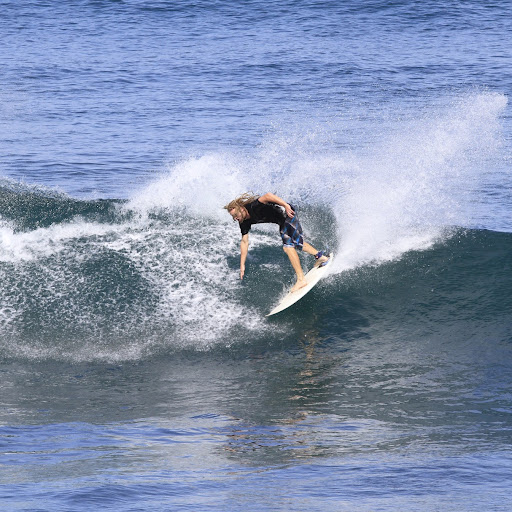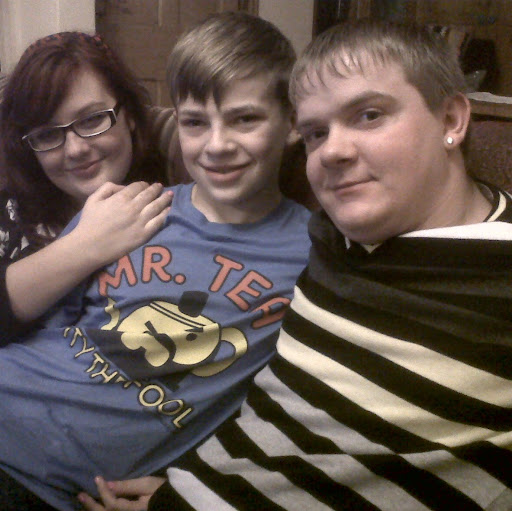Carl G Baldwin
age ~66
from Mansfield, TX
- Also known as:
-
- Carl Grant Baldwin
- Carl B Baldwin
- Carl M Baldwin
- Carl G Baldwinjr
- Cah G Baldwin
- Baldwin Baldwin
- Phone and address:
- 1800 Walnut Hills Ln, Midlothian, TX 76063
Carl Baldwin Phones & Addresses
-
s
- 1800 Walnut Hills Ln, Mansfield, TX 76063
- Arlington, TX
- San Antonio, TX
- Fort Worth, TX
- Capitol Heights, MD
- North Tazewell, VA
Work
-
Company:Intelispend prepaid solution (aeis)2005
-
Position:Client support/account management
Education
-
School / High School:Fontbonne University2007
-
Specialities:B.A. in Organizational Studies
Us Patents
-
Projectile Capable Of Propelling A Penetrator Therefrom And Method Of Using Same
view source -
US Patent:6845718, Jan 25, 2005
-
Filed:Dec 18, 2002
-
Appl. No.:10/325253
-
Inventors:Michael L. Fortner - Bedford TX, US
Carl G. Baldwin - Arlington TX, US -
Assignee:Lockheed Martin Corporation - Dallas TX
-
International Classification:F42B 1204
F41F 700 -
US Classification:102518, 102489, 89 8
-
Abstract:A projectile includes a body, a penetrator disposed at least partially within the body for penetrating a target or barrier, and means for propelling the penetrator from the body. A method includes directing a projectile toward a target or barrier and propelling a penetrator from within a body of the projectile. An apparatus for propelling a penetrator from a projectile includes a high energy power source and means for guiding the penetrator from the projectile.
-
Dimensionally Tolerant Multiband Conformal Antenna Arrays
view source -
US Patent:20130176176, Jul 11, 2013
-
Filed:Jan 9, 2012
-
Appl. No.:13/346305
-
Inventors:David L. Vos - Apalachin NY, US
Carl Baldwin - Mansfield TX, US
David R. Darling - Orlando FL, US
Brian Kaplun - Endicott NY, US
David R. Dorough - Winter Park FL, US -
Assignee:Lockheed Martin Corporation - Bethesda MD
-
International Classification:H01Q 1/38
B32B 38/14 -
US Classification:343700MS, 156277
-
Abstract:Some embodiments relate to a multiband antenna array formed on a flexible substrate. Low frequency antenna elements may be formed using nanoink. High frequency elements may be provided on a prefabricated antenna chip. The antenna array may be heated in a low temperature oven to sinter the nanoink into a solid antenna element. In some embodiments, an adhesive insulation layer may be provided which allows the antenna array to be attached to any surface. In other embodiments, the antenna array may be embedded in a composite material.
-
Dimensionally Tolerant Multiband Conformal Antenna Arrays
view source -
US Patent:20150303554, Oct 22, 2015
-
Filed:Aug 25, 2014
-
Appl. No.:14/467431
-
Inventors:- Bethesda MD, US
Carl Baldwin - Mansfield TX, US
David R. Darling - Orlando FL, US
Brian W. Kaplun - Endicott NY, US
David R. Dorough - Winter Park FL, US -
Assignee:Lockheed Martin Corporation - Bethesda MD
-
International Classification:H01Q 1/38
B32B 37/12 -
Abstract:Some embodiments relate to a multiband antenna array formed on a flexible substrate. Low frequency antenna elements may be formed using nanoink. High frequency elements may be provided on a prefabricated antenna chip. The antenna array may be heated in a low temperature oven to sinter the nanoink into a solid antenna element. In some embodiments, an adhesive insulation layer may be provided which allows the antenna array to be attached to any surface. In other embodiments, the antenna array may be embedded in a composite material.
Vehicle Records
-
Carl Baldwin
view source -
Address:6606 Rosewood Crst, San Antonio, TX 78238
-
VIN:1FTYR44U77PA73249
-
Make:FORD
-
Model:RANGER
-
Year:2007
Resumes

Production Mgr At Western Metals
view sourcePosition:
Production Mgr & CFO [email protected] at Western Metals
Location:
United States
Work:
Western Metals since Oct 2008
Production Mgr & CFO [email protected]
Production Mgr & CFO [email protected]

Carl Baldwin
view sourceLocation:
United States

Owner, Falcon Graphics, Inc.
view sourcePosition:
Owner at Falcon Graphics, Inc.
Location:
Dallas/Fort Worth Area
Industry:
Printing
Work:
Falcon Graphics, Inc.
Owner
Owner
Education:
Utah State University 1976 - 1980
Interests:
motorcycling, camping, travel, racquet sports...

Carl Baldwin St. Louis, MO
view sourceWork:
Intelispend Prepaid Solution (AEIS)
2005 to 2000
Client Support/Account Management Express Scripts
2000 to 2004
Member Choice Center Supervisor
2005 to 2000
Client Support/Account Management Express Scripts
2000 to 2004
Member Choice Center Supervisor
Education:
Fontbonne University
2007
B.A. in Organizational Studies
2007
B.A. in Organizational Studies
Name / Title
Company / Classification
Phones & Addresses
Principal
Decision Point Partners LLC
Business Services
Business Services
2815 S Ives St, Arlington, VA 22202
Principal
Filcam Machine Shop
Mfg Service Industry Machinery · Metal Restoration
Mfg Service Industry Machinery · Metal Restoration
1105 Colorado Ln, Arlington, TX 76015
8172777470
8172777470
Executive
Specialty Graphic Imaging Association
Business Association
Business Association
10015 Main St, Fairfax, VA 22031
7033851335
7033851335
MM
BALDWIN PREFERRED EQUITIES LTD CO
1017 W Pioneer Pkwy APT J, Arlington, TX 76013
Box 61 BOX 616, Erick, OK 73645
Box 61 BOX 616, Erick, OK 73645
Vice President, Principal
CHACC FOUNDATION
Civic/Social Association
Civic/Social Association
7B Jeep Street , Boerne, TX 78006
400 N Pennsylvania Ave , Roswell, NM 88201
52 N Sky Loop, Roswell, NM 88201
400 N Pennsylvania Ave , Roswell, NM 88201
52 N Sky Loop, Roswell, NM 88201
P, Director, President, Owner
Falcon Graphics Inc
Printing · Screen Graphics · Copies · Commercial Screen Printing
Printing · Screen Graphics · Copies · Commercial Screen Printing
1105 Colorado Ln STE G1, Arlington, TX 76015
417 Lillard Rd STE B, Arlington, TX 76012
420 Lillard Rd STE 101, Arlington, TX 76012
1105 Colorado Land STE G-1, Arlington, TX 76015
8172779999
417 Lillard Rd STE B, Arlington, TX 76012
420 Lillard Rd STE 101, Arlington, TX 76012
1105 Colorado Land STE G-1, Arlington, TX 76015
8172779999
MM
EQUIVEST HOLDINGS L L C
Holding Company
Holding Company
5904 Cedar Rdg Dr, Arlington, TX 76017
1017 W Pioneer Pkwy UNIT J, Arlington, TX 76013
1017 W Pioneer Pkwy UNIT J, Arlington, TX 76013

Carl Baldwin
view source
Carl John Baldwin
view source
Carl Baldwin
view source
Carl Baldwin
view source
Carl John Baldwin
view source
Carl Baldwin
view source
Carl Baldwin
view source
Carl Baldwin
view sourceMyspace
Googleplus

Carl Baldwin
Education:
Full Sail University
Tagline:
Im just waiting on my moment

Carl Baldwin

Carl Baldwin

Carl Baldwin

Carl Baldwin

Carl Baldwin

Carl Baldwin

Carl Baldwin
Flickr
Youtube
Classmates

Carl Baldwin
view sourceSchools:
Weber High School Ogden UT 1999-2003
Community:
Juli Kimball, Billy Wright

Carl Baldwin
view sourceSchools:
Catholic High School Bennington VT 1959-1963
Community:
Lee Hart, David Jerry, Lois Vigneau, Colette Knapp, Diane Urfer

Carl Baldwin
view sourceSchools:
Sharples Junior High School Seattle WA 1974-1978
Community:
Michael Stevens, Chris Mason, Gary Guinn, Patricia Lowden

Fox High School, Fox, Okl...
view sourceGraduates:
Carl Baldwin (1970-1974),
Diana Selby (1961-1965),
Scott Savage (1983-1987),
Jeannie Robinson (1971-1975),
Sue Franks (1956-1960)
Diana Selby (1961-1965),
Scott Savage (1983-1987),
Jeannie Robinson (1971-1975),
Sue Franks (1956-1960)

Sharples Junior High Scho...
view sourceGraduates:
Carl Baldwin (1974-1978),
Al Curtin (1952-1955),
Josephine Kopp (1969-1971),
Diane Young (1959-1962),
Jeanine Jamero (1977-1980)
Al Curtin (1952-1955),
Josephine Kopp (1969-1971),
Diane Young (1959-1962),
Jeanine Jamero (1977-1980)
Plaxo

Carl Baldwin
view sourceArlington, VASenior Manager at ICF International

Carl Baldwin
view source
Carl Baldwin
view sourceCFC
Get Report for Carl G Baldwin from Mansfield, TX, age ~66

















